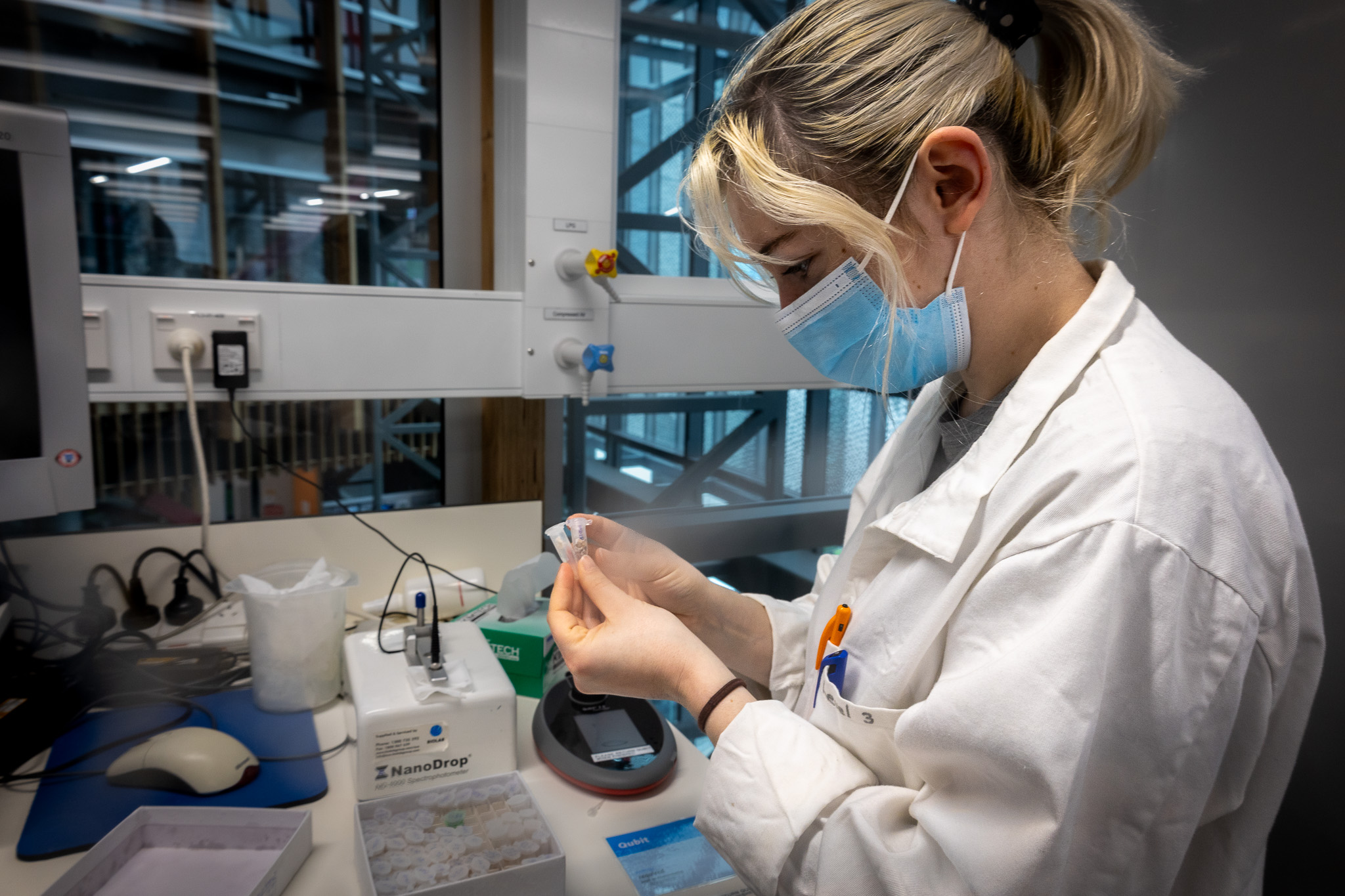22 June 2023

Masters Student Alexandra Cox, examining her samples
Alexandra Cox’s ultimate goal is to contribute to finding solutions that will protect native plants and agricultural crops from a devastating pathogen called Phytophthora cinnamomi. Her recently completed Masters of Science with distinction at the University of Canterbury is her first step to understanding how that might be done.
P. cinnamomi belongs to a group called the water moulds, or oomycetes, which Alex describes as “a weird one on the tree of life”. Although not well understood, oomycetes are similar to fungi in many ways, but they are most closely related to algae.
P. cinnamomi is closely related to the pathogens that caused the Irish potato famine and kauri dieback disease. However, unlike these host-specific pathogens, this oomycete causes root rot or dieback in more than 2,000 plant species.
The pathogen is a huge agricultural problem in Australia, as well as 70 other countries around the world. It is becoming an increasingly serious pest in Aotearoa New Zealand, especially as the climate warms and increases the amount of suitable environments or habitats. Native plants of Aotearoa New Zealand are particularly vulnerable, as are agricultural crops like avocados, and forestry species. Once it has infected an area, it is very hard to eradicate.
In an effort to control P. cinnamomi, scientists are trying to understand at the genetic level how the pathogen infects its hosts, so that they can develop ways to disrupt the infection pathways. P. cinnamomi is a parasitic endophyte, which starts in the root cells and spreads through the entire plant.

Alex is searching for insights one tube at a time
To gain access to the cells, the pathogen releases proteins called effectors, which help stop the host from detecting the pathogen and make it safe for the pathogen to enter. The host plant, in turn, evolves defences against the effectors, forcing the parasite to adapt in response. This ‘evolutionary arms race’ means the pathogen and host are constantly co-evolving in a fight for survival.
An important question with P. cinnamomi is how it can keep this arms race going, when it infects such a wide range of hosts. Alex is hoping that by comparing the pathogen’s genetics in different hosts, and specifically identifying its effectors, she will gain clues to help solve this puzzle.
This is a complex challenge, however, because there are hundreds of different effectors, many of which are redundant or expendable. Also, P. cinnamomi may use different effectors on different host species, which makes it extremely adaptable.
Luckily, recent advances in genetic technology have made it easier to sequence large quantities of genomic data. Alex obtained organisms from SCION, and then extracted her P. cinnamomi DNA. She did all of her own gene sequencing on a tiny machine about the size of a matchbox. In less than a year, she was able to sequence 10 new genomes from P. cinnamomi living on the roots of pine, kauri and fir to see how they compare. The sequences will be published online and will be a really useful tool for other researchers investigating this pathogen.
Alex plans to continue this research in her PhD, improving her sequencing even further and eventually creating a phylogenetic tree of P. cinnamomi genomes. Ultimately, she hopes to classify the pathogen’s effectors and explain what each one does.
She says, “I am so grateful for Bioprotection Aotearoa’s funding” and that she is now “more connected to other scientists than she’s ever felt.” She also enjoyed getting to learn more about science communication, cultural awareness, and “how science works in real life”.
“I have a cohort that’s been really valuable, and I’ve enjoyed learning about what’s going on at other universities and in other areas of science, from people of all ages and from all over the world. I really value these relationships and will keep them going in my PhD.”

